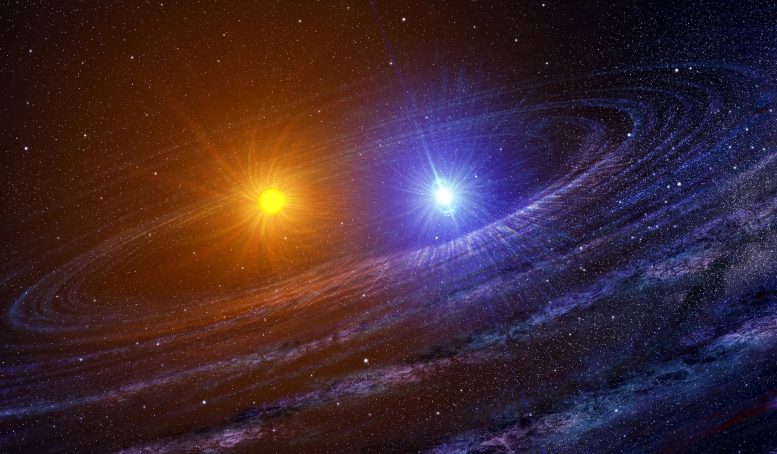
By Instituto de Astrofísica de Canarias (IAC) July 27, 2024
Collected at: https://scitechdaily.com/astronomical-anomaly-decoding-the-mystery-of-blue-supergiant-stars/
B-type blue supergiants are highly luminous, massive stars that defy traditional expectations by frequently appearing despite their theoretically brief evolutionary phase. Recent research provides new insights, showing that many blue supergiants likely form from the merger of massive binary systems. These mergers explain the stars’ presence in the ‘evolutionary gap’ and their unique surface properties, suggesting a major revision in understanding their life cycle and impact on galaxy formation.
B-type blue supergiants are exceptionally luminous and hot stars, boasting luminosities at least 10,000 times that of the Sun and temperatures 2 to 5 times higher. With masses ranging from 16 to 40 times that of the Sun, these stars are believed to exist during a brief and rapid phase of stellar evolution, making them theoretically rare. So, why do we observe so many of them?
An important clue to their origin lies in the fact that most blue supergiants are observed to be single, that is, they have no detectable gravitationally bound companion. However, most young massive stars are observed to be born in binary systems with companions. Why are blue supergiants single? The answer: massive binary stellar systems ‘merge’ and produce blue supergiants.
In a pioneering study led by IAC researcher Athira Menon, an international team of computational and observational astrophysicists simulated detailed models of stellar mergers and analyzed a sample of 59 early B-type blue supergiants in the Large Magellanic Cloud, a satellite galaxy of the Milky Way.
“We simulated the mergers of evolved giant stars with their smaller stellar companions over a wide range of parameters, taking into account the interaction and mixing of the two stars during the merger. The newly-born stars live as blue supergiants throughout the second-longest phase of a star’s life, when it burns helium in its core,” explains Menon.
Explanation for Evolutionary Anomalies
According to Artemio Herrero, IAC researcher and co-author of the article, “the results obtained explain why blue supergiants are found in the so-called ‘evolutionary gap’ from classical stellar physics, a phase of their evolution where we would not expect to find stars.”
But can such mergers also explain the measured properties of blue supergiants? “Remarkably, we found that stars born from such mergers have greater success in reproducing the surface composition, particularly the nitrogen and helium enhancement, of a large fraction of the sample than conventional stellar models. This indicates that mergers may be the dominant channel to produce blue supergiants”, says Danny Lennon, an IAC researcher who also participated in the study.
This study makes a big leap towards solving an old problem of how blue supergiants form and indicates the important role of stellar mergers in the morphology of galaxies and their stellar populations. The next part of the study will attempt to explore how these blue supergiants explode and contribute to the black hole-neutron star landscape.
Reference: “Evidence for Evolved Stellar Binary Mergers in Observed B-type Blue Supergiants” by Athira Menon, Andrea Ercolino, Miguel A. Urbaneja, Daniel J. Lennon, Artemio Herrero, Ryosuke Hirai, Norbert Langer, Abel Schootemeijer, Emmanouil Chatzopoulos, Juhan Frank and Sagiv Shiber, 8 March 2024, The Astrophysical Journal Letters.
DOI: 10.3847/2041-8213/ad2074

Leave a Reply